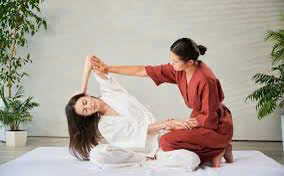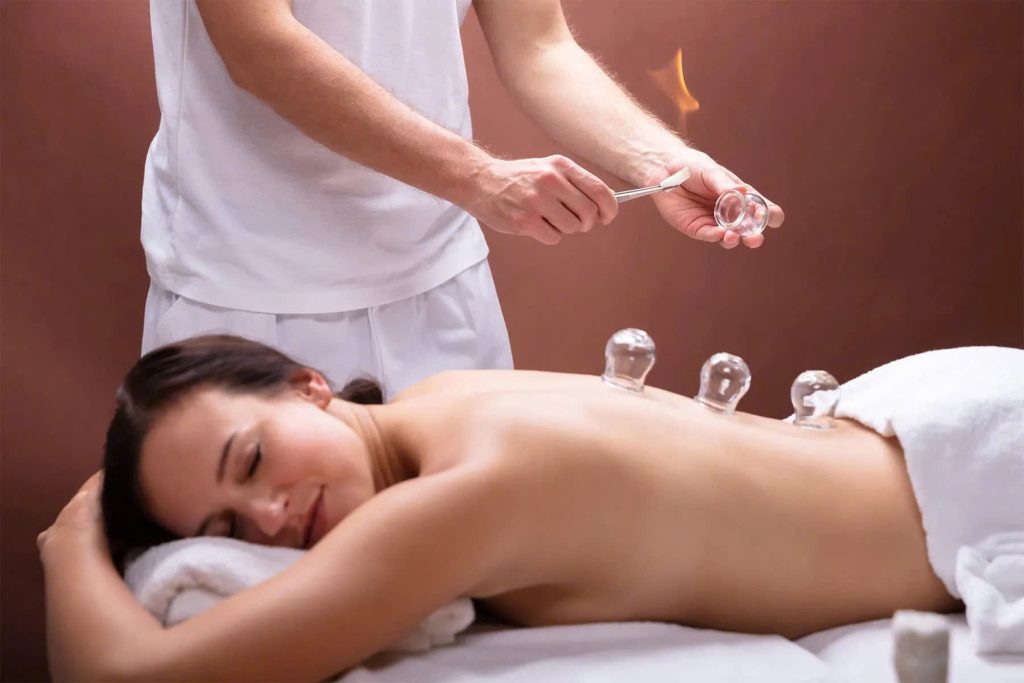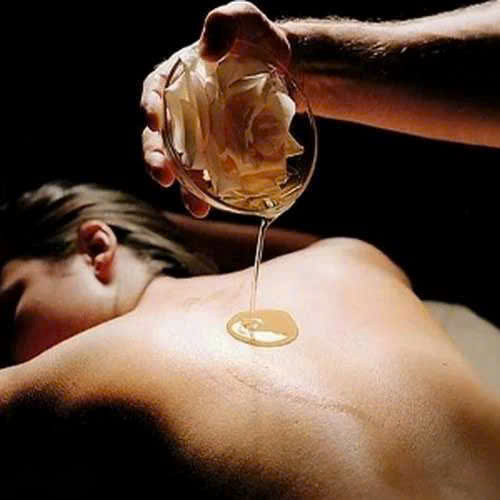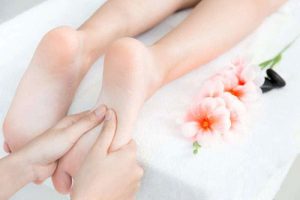How to Choose and Blend Different Massage Therapy Styles for Optimal Relaxation
Massage therapy is a powerful holistic approach to relieving muscle tension, reducing stress, and promoting overall well-being. With a diverse array of techniques available, understanding how to consciously select and blend various massage styles can significantly enhance your relaxation experience. Whether you’re a massage therapist aiming to offer personalized treatments or an individual seeking maximum benefit from your sessions, mastering this art can elevate your practice and personal health.
In this comprehensive guide, we’ll explore the intricacies of choosing and blending different massage therapy styles to achieve optimal relaxation. From traditional techniques to modern innovations, we’ll delve into how to craft customized sessions that cater to individual needs and preferences.

Understanding the Fundamentals of Massage Therapy Styles
Before diving into blending techniques, it is crucial to first understand the fundamental massage therapy styles available. Each style has unique principles, methods, and benefits that appeal to different aspects of relaxation, pain relief, and holistic health.
A clear comprehension of these styles allows practitioners and clients alike to make informed decisions about which techniques align with their specific needs. This foundation paves the way for strategic blending, resulting in more effective and satisfying massage sessions.
The Origins and Principles of Swedish Massage therapy
Swedish massage therapy is often considered the cornerstone of modern massage therapy. Developed in the 19th century by Per Henrik Ling and later refined, it emphasizes long, gliding strokes, kneading, and circular movements to warm up the muscle tissues.
This style aims primarily to improve circulation, reduce muscle tension, and promote overall relaxation. Its gentle yet effective approach makes it suitable for beginners and those seeking a calming experience.
Personal insight: The gentle nature of Swedish massage therapy makes it an ideal base for blending with more intense styles. Its focus on superficial muscles can serve as an excellent preparatory step before deeper work.
Deep Tissue Techniques and Their Therapeutic Benefits
Deep tissue massage therapy targets the deeper layers of muscles and connective tissues. It employs slow, deliberate pressure to alleviate chronic pain and muscle adhesions or knots.
While it can sometimes cause discomfort during treatment, the benefits of relieving long-standing tension and improving mobility are significant. This style is especially beneficial for athletes or individuals with chronic muscular issues.
Creative insight: Combining deep tissue with lighter, relaxing techniques can help ease clients into intense work, reducing the potential for discomfort and promoting better relaxation.

The Role of Neuromuscular Therapy and Trigger Point Work
Neuromuscular therapy focuses on treating trigger points—hyper-sensitive nodules within muscles that refer pain elsewhere. This technique involves precise pressure and hold strategies to deactivate these points.
It promotes pain relief and enhanced muscle function, often integrated into sports therapy or recovery treatments. Its targeted nature can be complemented with more holistic styles to broaden therapeutic outcomes.
Personal analysis: Blending trigger point work with Swedish massage can effectively address specific muscular pain while maintaining overall relaxation to prevent stress buildup from targeted pressure.
Incorporating Eastern and Alternative Techniques
Beyond Western-style massage therapy, techniques like shiatsu, Thai massage therapy , and acupressure emphasize energy flow and meridian points. These styles often involve rhythmic pressure, stretching, and manipulation.
They are beneficial for balancing body energy, reducing stress, and enhancing flexibility. When combined with Western modalities, they can create a more harmonized approach to massage therapy.
Insightful note: Integrating Eastern techniques demands a sensitivity to energy pathways and cultural practices, but when executed thoughtfully, they can profoundly deepen relaxation.

How to Thoughtfully Select and Blend Massage therapy Styles for Client Needs
Choosing the right combination of massage therapy styles requires awareness of individual preferences, health conditions, and goals. Tailoring sessions through thoughtful blending ensures clients receive a personalized experience that maximizes relaxation and therapeutic benefits.
The key is to identify core needs and adapt techniques to address them without overwhelming or under-serving clients. This customization transforms generic treatments into highly effective, engaging experiences.
Assessing Client Goals and Preferences
Initial consultations are vital for understanding what the client seeks—whether it’s stress relief, pain management, improved flexibility, or injury recovery. Here, asking open-ended questions allows you to gauge their pain points, comfort levels, and previous massage experiences.
For example, a client with chronic back pain may benefit from deep tissue techniques combined with gentle Swedish strokes to reduce discomfort and promote relaxation. Conversely, someone seeking stress relief might prefer primarily light, rhythmic modalities like shiatsu or aromatherapy-enhanced Swedish massage therapy.
Creative insight: Personal preferences extend beyond technique—consider client sensitivities, cultural openness, and their feedback during sessions to refine your approach dynamically.
Combining Techniques for a Holistic Experience
Blending multiple styles should be strategic, not arbitrary. A common approach is to start with a calming Swedish massage therapy to settle the client, then gradually introduce targeted techniques such as trigger point therapy or myofascial release.
Incorporating stretching and energy work can deepen the sense of physical and mental relaxation. For instance, finishing a session with gentle Thai stretches not only relieves muscle tightness but also invigorates the client’s energy flow.
Personal analysis: Think of massage therapy blending as composing a symphony—each technique contributes in harmony to a unified tune of relaxation and healing.

Timing and Sequence of Techniques
The sequencing of techniques can significantly influence the overall effect. Typically, beginning with soothing strokes helps relax muscles and mind, creating openness for deeper work. Transitioning into pain-specific therapies afterwards leverages the relaxed state for better tissue response.
In contrast, starting with intense deep tissue work may cause tension or discomfort, making subsequent relaxation efforts less effective. Therefore, planning the session flow strategically enhances client comfort and treatment efficacy.
Insight: Sometimes, less is more. Overloading a session with techniques can be counterproductive. Balancing intensity and relaxation stages fosters trust and deeper therapeutic outcomes.
Customization Based on Body Anatomy and Conditions
Understanding anatomy allows therapists to select appropriate techniques for specific muscle groups. For instance, targeting the lumbar region might involve deep tissue strokes combined with stretching, whereas neck tension could benefit from gentle acupressure and myofascial release.
Healthcare conditions such as osteoporosis or hypertension may contraindicate certain techniques, requiring modification or alternative approaches. Always consider medical history and consult with healthcare providers when necessary.
Data table: Common techniques and their primary benefits
| Technique | Main Benefit | Suitable For |
|---|---|---|
| Swedish Massage | Relaxation, circulation | General relaxation |
| Deep Tissue | Chronic pain, muscle knots | Athletes, chronic pain sufferers |
| Trigger Point Therapy | Localized pain relief | Specific muscular discomfort |
| Shiatsu/Energy Work | Energy balance, stress reduction | Stress-related tension, fatigue |
| Myofascial Release | Fascial restrictions, mobility | Postural issues, injuries |
Practical Tips for Blending Massage therapy Styles Effectively
Developing the skill to blend massage techniques seamlessly involves both technical mastery and intuitive sensitivity. Here are vital tips to achieve an effective blend that promotes ultimate relaxation.
Developing Sensory Awareness and Intuition
A therapist’s perceptiveness is key to successful blending. Paying close attention to muscle response, client feedback, and emotional cues guides real-time adjustments.
Training the senses to detect subtle tension or relaxation signals helps in selecting the next appropriate technique. Intuitive responses, built through experience, often lead to more personalized and therapeutic sessions.
Personal insight: Trusting your instincts can elevate your practice from routine to art. Cultivate mindfulness and presence to enhance this sensitivity.
Balancing Technique Intensity and Pace
Varying the pressure and tempo throughout a session keeps the client engaged and prevents overstimulation or fatigue. Combining slow, lingering strokes with brisk, rhythmic movements can evoke a dynamic relaxation experience.
By consciously modulating intensity, therapists can create a tailored ebb and flow, guiding clients into deeper states of calm. For instance, a gentle Swedish start can warm tissues before moving into targeted deep tissue work.
Incorporating Aromatherapy massage therapy and Other Modalities
Enhancing massage therapy with aromatic oils, sound therapy, or light touch techniques further enriches the experience. Aromatherapy can influence mood and relaxation levels, assisting in the blending process.
Additionally, integrating elements like hot stones or work with textured tools introduces sensory diversity, anchoring relaxation and facilitating deeper tissue penetration when combined skillfully.
Practicing Continuous Education and Technique Refinement
Staying updated with the latest research, attending workshops, and practicing diverse styles sharpens skills. Experimenting with blending strategies in a supervised setting helps refine personal style and effectiveness.
Reflective practice—reviewing client outcomes and personal techniques—support ongoing growth. Embrace feedback, both verbal and non-verbal, to improve blending skills.
Conclusion
mastering how to choose and blend different massage therapy styles for optimal relaxation involves a nuanced understanding of individual needs, the characteristics of each technique, and the art of seamless integration. Recognizing the strengths of modalities like Swedish massage, deep tissue, trigger point therapy, and Eastern techniques allows practitioners to craft personalized treatments that balance relaxation with therapeutic efficacy. Thoughtful assessment and strategic sequencing ensure that clients experience the most profound state of calm, pain relief, and mental clarity possible. Continuous learning and intuitive practice elevate the craft of massage therapy into a truly transformative experience, where merging diverse styles culminates in holistic well-being.
Timing and Sequence of Techniques
The sequencing of massage techniques can significantly influence the overall effect on the client’s experience. Properly timed techniques can enhance the therapeutic benefits of each stroke, leading to a more effective and cohesive session. By strategically planning the sequence, therapists can optimize client comfort and maximize results.
Importance of Initial Soothing Strokes
Beginning a massage therapy session with gentle and soothing strokes serves several purposes. Primarily, these strokes act as a warm-up, helping to relax both the body and mind. Soft strokes stimulate the body’s relaxation response, increasing the release of endorphins and decreasing cortisol levels. This initial phase encourages the client to let go of everyday stresses and prepare for deeper tissue work.
Additionally, starting with soothing techniques promotes trust between the therapist and client. The softer approach reassures clients that they are in a safe environment, fostering an emotional connection that can enhance the therapeutic experience. As the muscles relax and the client becomes more open, the therapist may start transitioning into more targeted work, leveraging the earlier relaxation state.
Personal Insight: I have often noticed that clients who enter a session feeling tense and anxious respond much better after a set of calming strokes. The transitional flow encourages them to trust the process, leading to a greater responsiveness during deeper work.
Strategic Transition to Pain-Specific Therapies
Once a restful foundation has been laid, transitioning into pain-specific therapies is crucial for the effectiveness of the holistic treatment. Engaging in deep tissue work after the preliminary soothing strokes ensures that the target tissues can relax more readily, allowing for deeper penetration and release of muscle knots.
In this context, planning the session flow strategically can enhance treatment efficacy. For example, if the focus is on alleviating lower back pain, beginning with gentle circular movements around the lumbar region can help to warm up the surrounding tissues. Once the muscles are pliable, the therapist can smoothly transition into focused techniques like deep tissue or myofascial release.
The transition should be seamless and carefully executed, as abrupt changes in pressure or style may cause discomfort. By monitoring how the client’s body responds, therapists can adapt their approach as needed, ensuring that each technique builds upon the last.
Balancing Intensity and Relaxation Stages
One of the most crucial aspects of blending techniques effectively is the ability to balance intensity with relaxation stages. Overloading a session with too many intense techniques can result in overwhelming the client’s system, counteracting the benefits of massage altogether. Finding the right rhythm is essential to maintain engagement and promote therapeutic outcomes.
For instance, while deep tissue work can effectively target specific pain or tension, incorporating periods of lighter pressure in between is vital. These pauses allow clients to recalibrate, making the overall experience feel less invasive. The use of varying pressure and rhythm creates a dance of sorts, allowing the body to experience both intensity and gentleness.
Creative Insight: In my practice, I often like to visualize the session as music—some notes are soft and airy, while others are deep and resonant. Each stroke has a purpose, aiming to create a harmonious experience for the client.
Customization Based on Body Anatomy and Conditions
A profound understanding of human anatomy is indispensable for therapists aiming to customize treatments effectively. Different body areas possess unique muscle structures and tensions, which require tailored approaches to yield the best results. A therapist’s ability to recognize these distinctions can significantly enhance the therapeutic experience.
Assessing Individual Anatomy Before Treatment
Before diving into techniques, assessing an individual’s anatomy and physical condition is essential. This initial assessment can involve a thorough consultation regarding the client’s specific concerns, including any previous injuries or chronic conditions. By evaluating the range of motion and areas of tension, therapists can tailor their techniques to address the most pressing needs.
For example, individuals with conditions such as scoliosis may require special attention to ensure that pressure is evenly distributed across their back. On the other hand, if a client presents with tightness in the shoulders, targeting those particular muscle groups with a mix of deep tissue and stretching techniques will likely yield better outcomes.
Effective assessment also allows therapists to recognize contraindications for certain techniques based on the client’s health history, ensuring a safe treatment.
Adapting Techniques for Medical Conditions
Different medical conditions also require adaptations in massage therapy techniques. For example, clients with osteoporosis or hypertension warrant more gentle approaches. Therapists must proceed with caution, modifying standard techniques or opting for alternative therapies such as lymphatic drainage or gentle Swedish massage.
It’s also vital to keep an open line of communication with clients regarding any discomfort or issues arising during the session. This feedback enables real-time adjustments to be made, ensuring that the therapy remains effective yet safe.
Insight: Understanding and accommodating a client’s medical history not only prevents potential harm but also builds trust. When clients feel heard and understood, they’re more likely to engage openly in the process, allowing for deeper healing.
Practical Tips for Blending Massage therapy Styles Effectively
Blending various massage techniques isn’t solely about knowing each modality; it involves utilizing them intuitively based on the client’s needs. Achieving effective integrations requires practice, experience, and a commitment to understanding each style’s uniqueness.
Developing Sensory Awareness and Intuition
Developing sensory awareness is key to mastering the art of blending techniques. A therapist should pay close attention to how the client’s body responds through tactile feedback. The muscular response to pressure can indicate the next best technique to apply.
Building an intuitive approach means being present in the moment, allowing for spontaneous adaptations to the flow of the session. After several treatments with the same or varying clients, therapists can identify patterns in reactions, which can guide their choices going forward.
Personal Insight: I often take a few moments before every session to center myself. This mindfulness practice helps enhance my sensitivity to a client’s needs and fosters a deeper connection during treatment.
Balancing Technique Intensity and Pace
Variety in pressure and pace throughout a session can dramatically impact a client’s experience. Slow, tender strokes interspersed with firmer movements create a dynamic quality that keeps the client engaged while providing therapeutic benefits.
As pressure and rhythm change, clients may experience new levels of relaxation that may not have been possible with a single, uniform technique. For example, beginning with gentle Swedish strokes can gradually prepare muscles for more rigorous deep tissue work, which in turn can be followed by soothing strokes that calm any remaining tension.
Incorporating Aromatherapy and Other Modalities
Incorporating aromatherapy and additional modalities can elevate the massage experience to new heights. Essential oils not only add a sensory dimension to the treatment but can also have physiological effects, enhancing relaxation and mood. The choice of oils can reflect the intention of the session, whether it is to invigorate, calm, or relieve tension.
Tools such as hot stones or various textures can offer an enriched sensory experience when blended skillfully with manual techniques. For instance, hot stone placements can loosen muscles, thereby allowing deeper targeted strokes to penetrate more profoundly.https://www.tiktok.com/@jobe.spa.massage?_t=ZS-8uucYtHwssr&_r=1
Conclusion
Mastering the art of choosing and blending different massage therapy styles for optimal relaxation necessitates a nuanced understanding of individual client needs, the unique characteristics of each technique, and the seamless integration of these modalities. Recognizing the strengths of various treatments—from Swedish massage and deep tissue techniques to trigger point therapy and Eastern therapies—empowers practitioners to create personalized sessions that balance relaxation with efficacy. Thoughtful assessment, strategic sequencing of techniques, and an awareness of anatomical considerations transform the massage session into a profound experience of healing and restoration. Continuous learning and honing intuitive practice elevate the craft into a transformative journey, where the careful merging of diverse techniques culminates in holistic well-being.https://jobedubaispa.com/massage-11/

